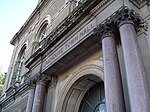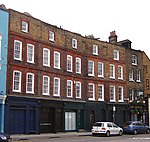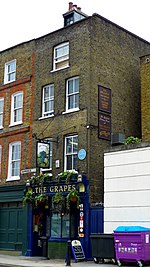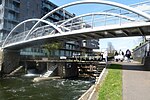Limehouse Town Hall
City and town halls in LondonCultural and educational buildings in LondonGovernment buildings completed in 1881Grade II listed buildings in the London Borough of Tower HamletsLimehouse ... and 2 more
Local government buildings in LondonUse British English from April 2022

Limehouse Town Hall is a former town hall building on Commercial Road, in Limehouse, in the London Borough of Tower Hamlets. It is a Grade II listed building.
Excerpt from the Wikipedia article Limehouse Town Hall (License: CC BY-SA 3.0, Authors, Images).Limehouse Town Hall
Commercial Road, London Limehouse
Geographical coordinates (GPS) Address Website External links Nearby Places Show on map
Geographical coordinates (GPS)
| Latitude | Longitude |
|---|---|
| N 51.5121 ° | E -0.03145 ° |
Address
Limehouse Town Hall
Commercial Road 646
E14 7HA London, Limehouse
England, United Kingdom
Open on Google Maps








